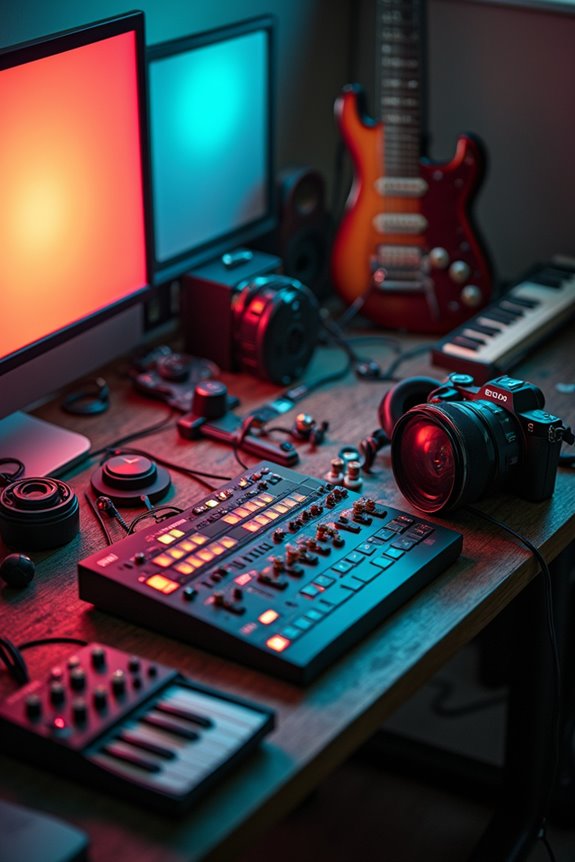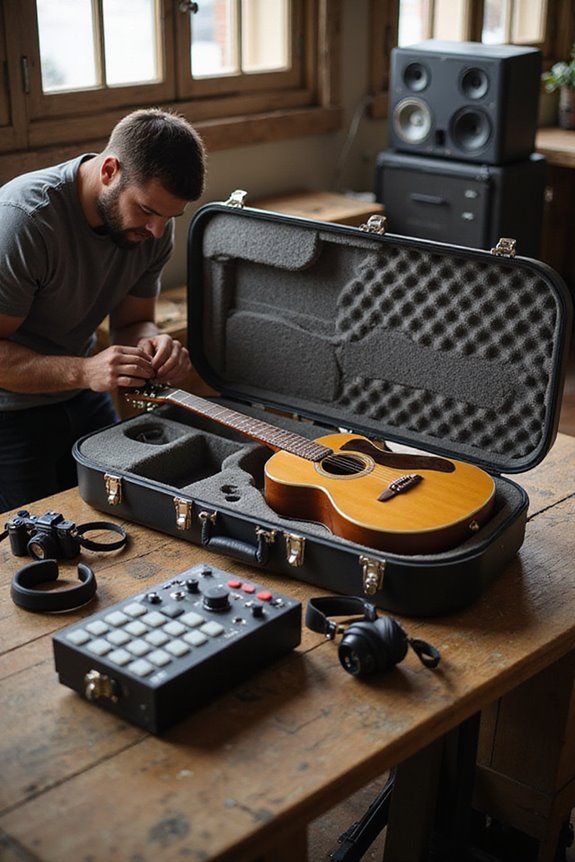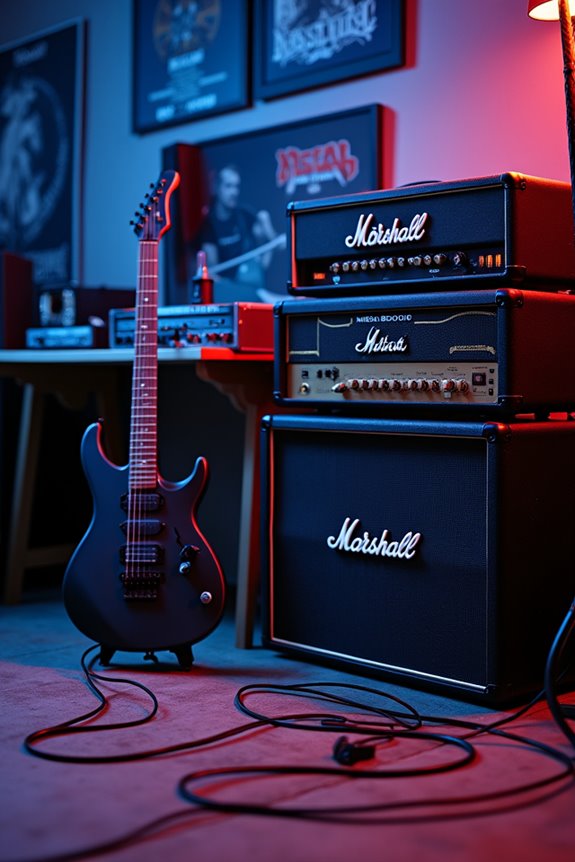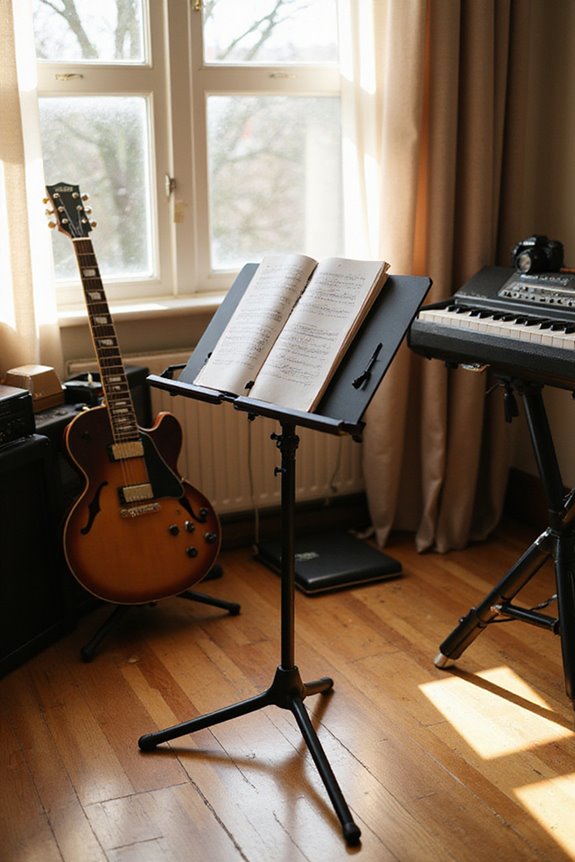When it comes to protecting our hearing, using musicians’ earplugs is essential. These earplugs, like the Alpine MusicSafe Pro, reduce harmful noise levels while preserving sound quality—critical for practice and performances. Achieving the right fit is imperative, as a snug earplug minimizes sound distortion and auditory fatigue. Additionally, acoustic designs guarantee we hear essential frequencies clearly. By prioritizing hearing health, we can continue to enjoy music for years to come. You’ll discover more about choosing and maintaining earplugs next.
Key Takeaways
- Musicians’ earplugs provide essential noise reduction while maintaining sound clarity, helping to prevent hearing loss during performances and practice.
- High-fidelity earplugs, like Alpine MusicSafe Pro, offer uniform attenuation, ensuring audio quality is preserved without overly muffling sound.
- Comfort and proper fit are crucial for effective hearing protection, as inconsistent fit can diminish the protective benefits of earplugs.
- Acoustic designs in musicians’ earplugs utilize filters to maintain important frequencies while reducing overall volume, enhancing the listening experience.
- Despite the risk of hearing disorders, fewer than 2% of musicians use hearing protection, underlining the need for increased awareness and adoption.
Understanding the Need for Hearing Protection
As we explore the domain of musicianship, we often overlook a critical aspect of our craft: protecting our hearing. Our love for musical acoustics and the passion behind our performances can put us at risk. Statistics reveal that professional musicians face a 1.45 times higher risk of hearing loss compared to the general population. Approximately 40% of us experience hearing disorders like tinnitus and hyperacusis. Elevating our hearing awareness is fundamental—using hearing protection helps reduce exposure to damaging noise levels. Simple actions, like wearing custom-fitted earplugs during practice and performances, can make a significant difference. They not only help maintain our auditory health but also guarantee we can continue to create music we love for years to come.
Types of Musicians’ Earplugs and Their Effectiveness
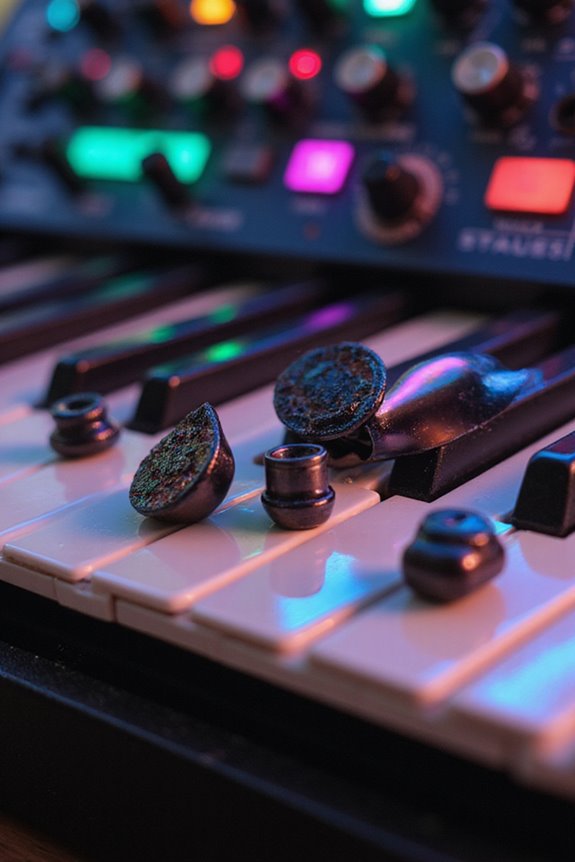
When it comes to protecting our hearing, choosing the right type of earplugs can make all the difference for musicians. Over-the-counter options like foam and plastic earplugs can be affordable and easy to find, but they often over-attenuate high frequencies, distorting the music we love. For those seeking clearer sound, high-fidelity musician earplugs, such as Alpine MusicSafe Pro, offer uniform attenuation without sacrificing audio quality.
For advanced protection, we can explore active attenuation earplugs like Etymotic Research MP9-15, which provide adjustable levels of attenuation. These earplugs help maintain sound clarity while protecting our hearing. Ultimately, selecting the right earplugs tailored to our needs is essential for a peak and safe musical experience.
The Importance of Fit and Comfort
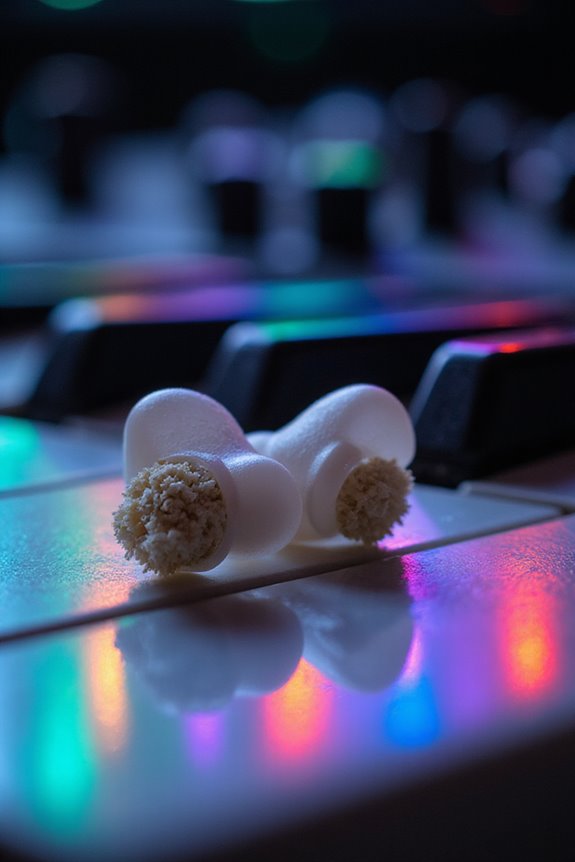
Understanding the importance of fit and comfort in musicians’ earplugs is crucial for achieving effective hearing protection. A proper fit assessment can determine how well earplugs protect our hearing. Factors influencing fit include ear canal shape and user dexterity in insertion. When the fit is inconsistent, we lose significant protective benefits.
Equally important are comfort factors, as discomfort prompts many to remove earplugs during use. Lightweight and non-irritating materials enhance tolerance during long practice sessions. Musicians often find that well-fitting, comfortable earplugs reduce issues like tinnitus and auditory fatigue, allowing for better focus and performance. Ultimately, investing in quality earplugs guarantees our hearing stays protected while we enjoy the music we love.
Acoustic Design for Enhanced Sound Experience
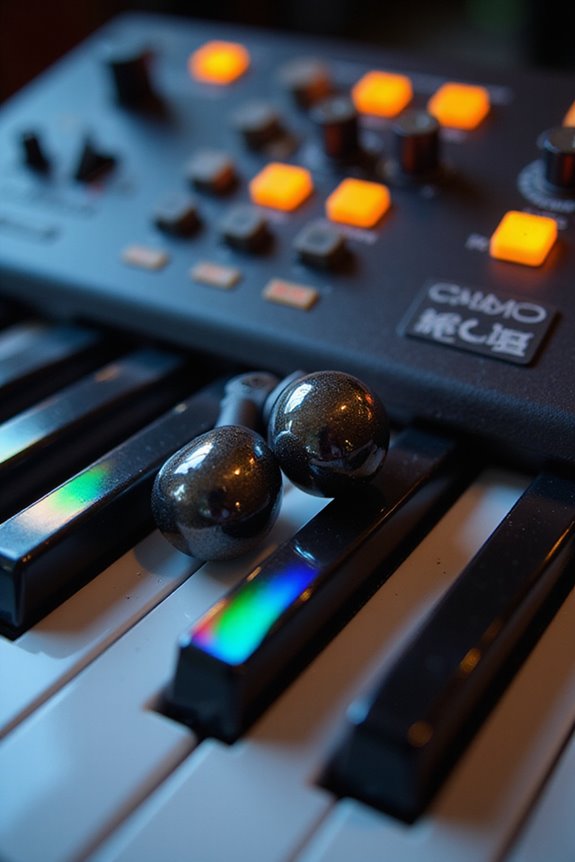
In order to create an ideal listening experience while protecting our hearing, musicians’ earplugs are designed with sophisticated acoustic engineering in mind. By utilizing acoustic compliance and a unique diaphragm structure, these earplugs achieve balanced sound resonance around 2700 Hz, mimicking our ear’s natural response to music.
Their frequency-selective filters guarantee we hear essential high frequencies between 2-4 kHz while reducing overall volume, maintaining sound fidelity. For instance, interchangeable filters let us customize attenuation levels based on our environment, whether in quieter rehearsals or louder concerts. Additionally, deep-fitting custom molds minimize the occlusion effect, allowing a clearer perception of our instruments and voices. This thoughtful acoustic design truly enhances our musical experience while prioritizing hearing protection.
The Impact of Noise-Induced Hearing Loss
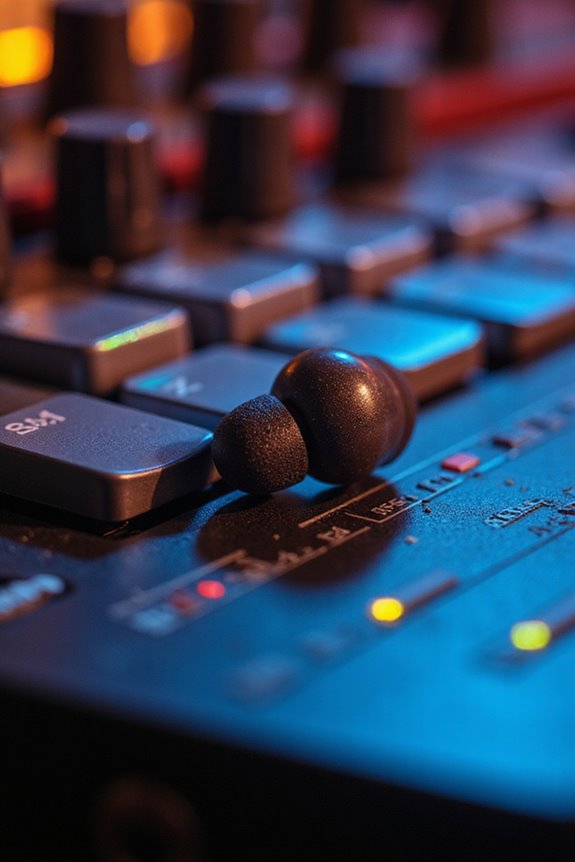
The reality of noise-induced hearing loss (NIHL) is all too prevalent among musicians, casting a shadow on our collective passion for sound. Research shows that over 42% of us exhibit signs of hearing damage, and nearly 51% report tinnitus following performances. These issues severely impact our musical performance, affecting volume perception, pitch accuracy, and timing. Long-term sound exposure, especially without protection, can result in progressive and permanent hearing loss. Moreover, we often experience ear pain during gigs, affecting our enjoyment and longevity in the industry. Despite these alarming statistics, fewer than 2% of musicians use hearing protection. It’s essential that we prioritize our hearing health to preserve our auditory abilities and enhance our musical experiences.
Strategies for Choosing the Right Earplugs
Choosing the right earplugs can greatly impact our auditory health and overall performance as musicians. To start, we should consider the earplug materials available, as they affect both comfort and sound quality. For example, musician-specific earplugs offer flat frequency attenuation, preserving sound clarity. We can also explore custom-fitted options for a better fit and enhanced comfort. User feedback is invaluable in guiding our choices; many musicians find that custom or active attenuating earplugs balance protection and sound quality effectively.
Moreover, we must pay attention to proper insertion technique, as this considerably influences protection levels. Investing time in selecting earplugs that suit our needs guarantees we’ll enjoy them and protect our hearing without compromising our musical experience.
Long-Term Hearing Health and Preservation Techniques
Understanding the importance of long-term hearing health is essential for musicians who regularly expose themselves to loud environments. Regular audiological evaluations can help us track our hearing status, allowing us to act before damage becomes irreversible. By using high-quality musicians’ earplugs, we can enjoy sound clarity while protecting our ears from dangerous decibel levels. Additionally, custom-fitted earplugs minimize the occlusion effect, guaranteeing we still hear our instruments accurately. Practicing with earplugs allows us to acclimate better and maintain peak auditory performance. It’s also wise to consult hearing care professionals regularly, guaranteeing we adapt our strategies for hearing preservation effectively. By following these techniques, we enhance our comfort and guarantee a sustainable career in music.
Frequently Asked Questions
Can I Use Regular Earplugs Instead of Musicians’ Earplugs?
We can’t recommend regular earplugs instead of musicians’ earplugs. Their drawbacks include sound distortion and discomfort, while musicians’ earplugs provide flat attenuation and improved sound quality, essential for preserving our hearing and enjoying music.
How Often Should I Replace My Musicians’ Earplugs?
How often should we replace our musicians’ earplugs? The replacement frequency depends on earplug lifespan, usage, and care. Regular inspection guarantees we keep them effective, maintaining the balance between protection and sound quality.
Are There Any Side Effects From Wearing Earplugs?
Yes, we can experience earplug discomfort when wearing them too long. While they provide essential hearing protection, poor fit might lead to irritation, and excessive high-frequency attenuation might distort sound, affecting our overall performance.
What Is the Cost Range for Custom Earplugs?
When considering the cost range for custom earplugs, we should note they typically range from $100 to $300. While there are affordable options, custom fitting surely enhances comfort and sound quality for musicians like us.
How Do I Clean and Maintain My Earplugs?
To maintain earplug hygiene, we should clean them regularly with mild soap and water. It’s important to follow maintenance tips, storing them properly and ensuring they’re completely dry before reuse to prolong their lifespan.

